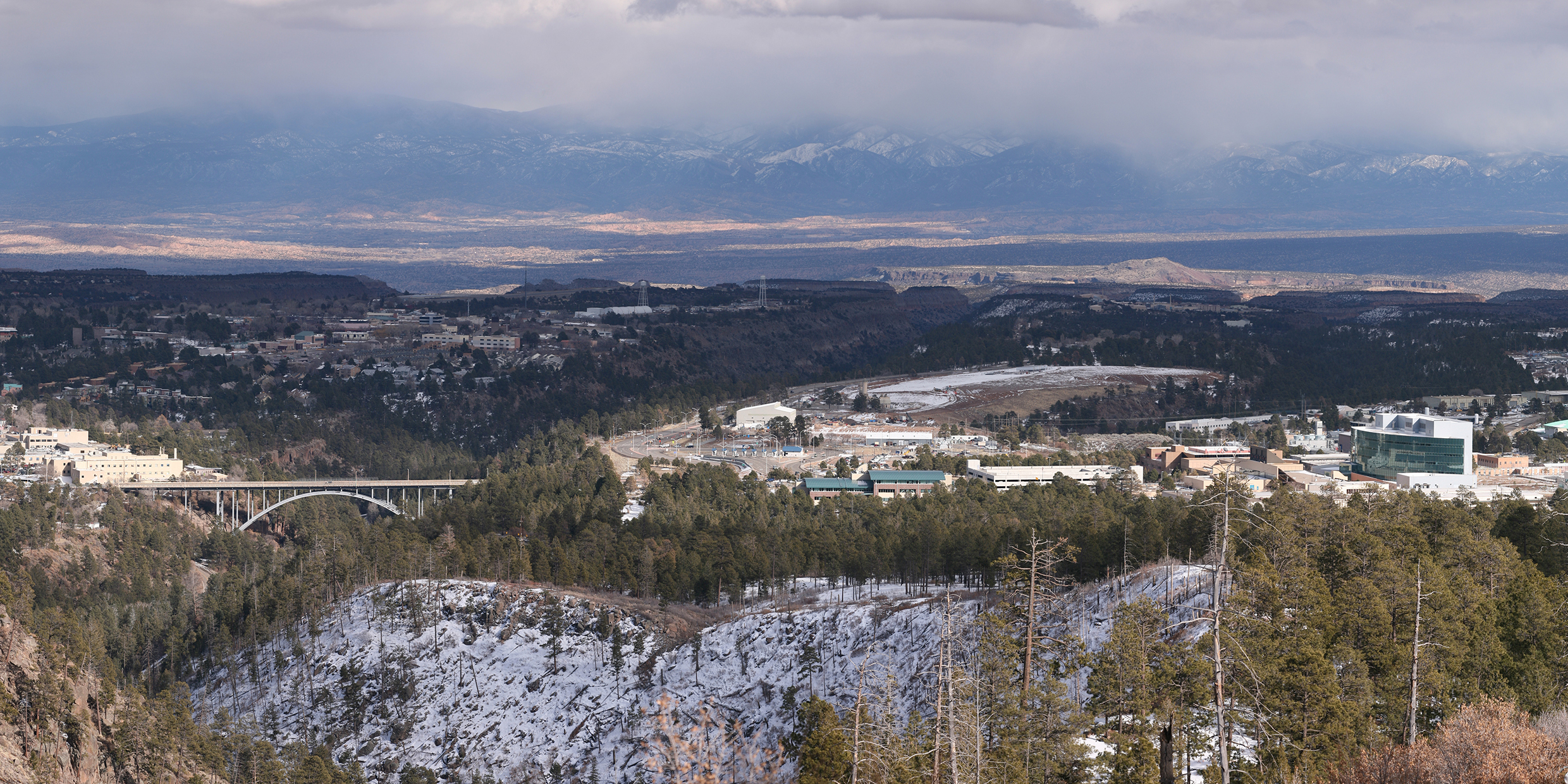Originally published 16 May 2000
LOS ALAMOS, N.M. — Until the fires hit last week [in May 2000], this town slumbered in post-atomic anonymity, stuck away on a quiet, wooded plateau on a shoulder of the Jemez Mountains, 30 miles northwest of Santa Fe. The fires, and consequent destruction and evacuations, yanked Los Alamos back into public consciousness, from that place of blessed forgetfulness where we tuck things we don’t want to recall.
The town we saw burning on our television screens has one great claim on history: It is the birthplace of the most violent instrument of death ever created.
In 1918, Michigan educator Ashley Pond established a Ranch School at Los Alamos at which “privileged Eastern boys might become robust, learned men.” It was then a remote place, difficult of access. The boys slept on screened porches all year round and graduated on horseback. We see them looking out from archival photographs, full of innocence, idealism and good health.
During the years 1941 and 1942, the older brothers and fathers of some of these boys were fighting and dying on the battlegrounds of Europe and the Pacific. Like everyone else in the nation, they hoped for an end to the conflict as quickly as possible.
Meanwhile, physicists around the world had recognized the possibility of converting mass into energy through a nuclear chain reaction in the elements uranium and plutonium. Calculations suggested that staggering amounts of energy might suddenly be released from relatively small amounts of matter. If an atomic weapon was possible, it was imperative that the Allies have it first.
In the winter of 1942, the US government purchased Pond’s Los Alamos Ranch School and gathered there what was probably the smartest bunch of minds ever assembled in one place, under the leadership of the physicist Robert Oppenheimer. By car and train, the scientists and their support staff made their way to Santa Fe, then up the rugged mountain road to Los Alamos. The few Ranch School buildings were soon complemented with a sprawling array of new prefabricated structures. A fair-sized town instantly came into being.
It was a town that officially did not exist until after the first atomic bomb was exploded over Hiroshima, Japan, on August 6, 1945, killing 130,000 people.
For more than a half-century, we have lived with the bomb and the possibility of nuclear holocaust. Those of us who were alive during the Cuban missile crisis, in particular, remember the fearful prospect of atomic devastation. Even now, a decade after the end of the Cold War, more than 30,000 nuclear warheads still exist in the world, each one capable of wreaking widespread destruction.
And what of Los Alamos. Today, it might be Anytown, USA. Only yards from the old Ranch School lodge where the atomic scientists took up residence are shopping centers, fast-food outlets, gasoline stations, motels. An eerie normalcy, interrupted however briefly by last week’s fire, settled over the place where Oppenheimer and his crew of geniuses harnessed the energy of the stars and brought World War II to a decisive but ominous end.
The Los Alamos National Laboratory is still the biggest show in town, but it has moved across the Los Alamos Canyon to an adjacent mesa. National security is still a primary concern of the lab, but its research agenda has expanded to include biology, medicine, non-nuclear energy resources, environmental cleanup, climate change, planetary exploration, and industry.
Still, there is a spooky disquiet about the place. This is more than Anytown, USA. It is Ideal Town, USA — spanking new, no slums, affluent citizens, clean streets, pristine mountain air, crystal light.
Then, suddenly, the source of apprehension becomes clear. It is memory. The unforgettable photographs of that first mushroom cloud rising over the Alamogordo desert; the obliterated neighborhoods of Hiroshima, with only a few concrete shells standing here and there like tombstones; the bright-eyed, smiling crew of the Enola Gay, the plane that carried the bomb to its target, unaware until the last moment of the nature of their cargo.
Like the scientists who built the bomb, this nation will long debate the wisdom of using the bomb without warning on a mostly civilian population. Los Alamos’s two bomb-centered museums will help keep that debate alive, but museums have an “it’s history” quality about them, and atomic weapons are anything but history.
Somewhere in this peaceful, picture-perfect town, a permanent banner should be strung conspicuously across a main road with the words from the Bhagavad Gita that Robert Oppenheimer remembered as the first bomb detonated at Alamogordo: “I am become death, the shatterer of worlds.”



